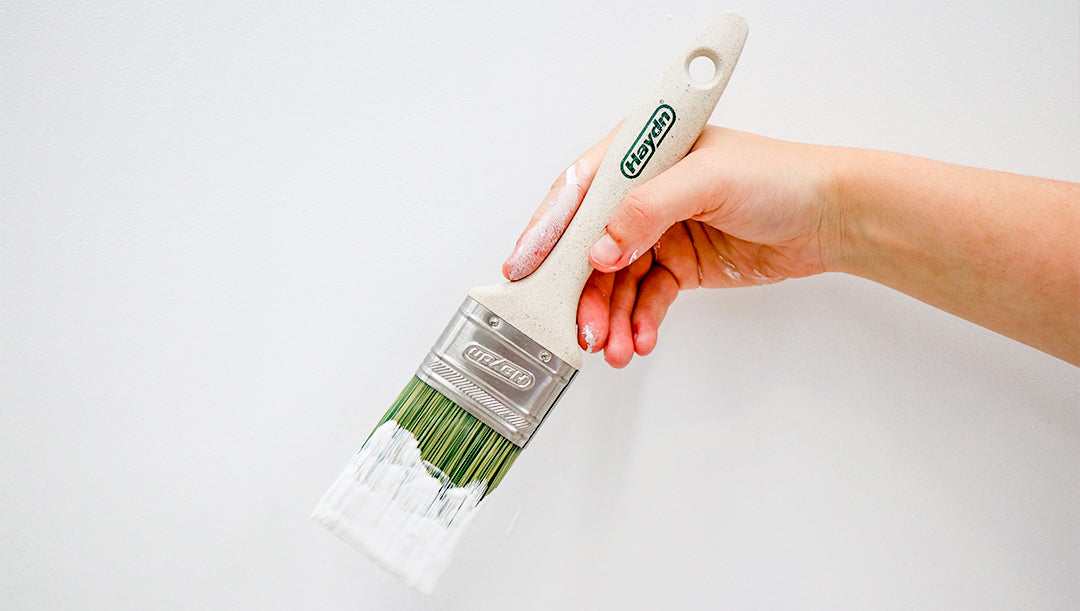
The 3 Types of Paint
Before we dive into eco-friendly brush care, let's understand the three main types of paint commonly used by homeowners:
- Natural Paint: Natural paint is made from eco-conscious ingredients such as clay, minerals, milk protein, and plants. While it's pricier and not as readily available in stores, it's a safe and eco-friendly choice suitable for almost anyone.
- Water-Based or Latex Paint: Latex paint is water-based and is generally considered safer for the environment compared to oil-based paints. However, it may still contain some chemicals, making its cleanup a bit more involved.
- Oil-Based Paint: Oil-based paint is the most challenging to clean up due to its hazardous nature. If you're an eco-conscious homeowner, you might prefer alternatives.
Cleaning Up After Each Type

- Natural Paint
Cleaning brushes used with natural paint is straightforward. You can clean them with soap and water, making it an excellent choice for those who value eco-friendliness.
- Water-Based or Latex Paint
Latex paint, while water-based and less harmful to the environment, requires a bit more care during cleanup. Here's a basic process:
- Squeeze out excess paint from the brush.
- If the paint has already dried on the brush, soak it in water or another solvent.
- Squeeze the brush with a dry newspaper or paper towels.
- Rinse the brush in warm soapy water made with dishwasher detergent.
- Oil-Based Paint
Cleaning up after oil-based paint is the most complex process due to its hazardous nature. Here's a detailed procedure:
- Gather your tools, including a Haydn® White Bucket, Haydn® Vinyl Gloves, a strong solvent, a Haydn® Roller and Brush Cleaner Comb, a Haydn® UP™ Biodegradable Drop Sheet, and paper towels or newspapers.
- Lay down the Haydn® UP™ Biodegradable Drop Sheet to protect your workspace.
- Ensure proper ventilation by opening windows and doors.
- Use protective Haydn® Vinyl Gloves to avoid skin contact with the paint.
- Scrape away as much paint as possible from the brush using Haydn® Roller and Brush Cleaner Comb.
- Soak the brushes in a non-toxic solvent for around five minutes, gently combing away any excess solvent.
- Use paper towels or newspaper to blot the solvent from the paintbrushes, repeating two to three times with fresh solvent each time.
- Allow the brushes to air dry, and combine the different cans of solvent for proper disposal.
Eco-Friendly Solvents
The choice of solvent for cleaning your paint brushes is essential for the environment. Let's explore some options:
Water
Water is a potent and eco-friendly solvent, but its disposal can be challenging due to the toxic chemicals it may contain. Here's how to handle it:
Combine water-based solvent into one container and allow it to evaporate until only the paint solids remain. Dispose of the solids at a hazardous waste centre.
Alternatively, allow the water to sit for a few days and drain the solids from the water using a coffee filter.
Natural Solvents

Two natural solvents—vinegar and citrus—offer eco-friendly cleaning options.
Vinegar
Vinegar, an unexpected choice, can be useful for quick cleanups or for brushes that have dried up overnight. Here's how to use it:
- Heat distilled white vinegar in the microwave for one minute.
- Place brushes into the hot vinegar and let them sit for up to thirty minutes.
- Rinse the brushes with water to remove any remaining paint.
Citrus Solvent
Citrus solvent, made from pure citrus peeling oil extract, is an eco-friendly and effective choice that won't harm the environment. To use it, follow the directions provided for vinegar solvent.
DIY Citrus Solvent
Reusable Cleaning Solutions
Consider using reusable cleaning solutions specifically designed for brush cleaning. These products are designed to be eco-friendly and are often biodegradable. They can be a great option for painters looking to minimize their environmental impact.
A Vital Tip About Cleaning Paint Brushes

You don't have to clean your paint brushes every time you take a break from painting. For short breaks, wrap your brush in paint brush covers like BrushBaggy™ to keep it ready for use. For more extended pauses, place it in the freezer, allowing it to remain pliable for up to two weeks. Avoid discarding paintbrushes after each use to reduce waste and minimize their impact on landfills.
Cleaning your paint brushes in an eco-friendly way is not only better for the environment, but also for your wallet and your health. By following these simple steps, you can extend the lifespan of your brushes, reduce the use of harmful chemicals, and contribute to a greener, more sustainable future.
At Haydn® UP™, we are proud to offer a range of sustainable painting and decorating tools, so be sure to explore our eco-friendly product options as well. Happy painting, and let's leave a beautiful, clean Earth for future generations.

